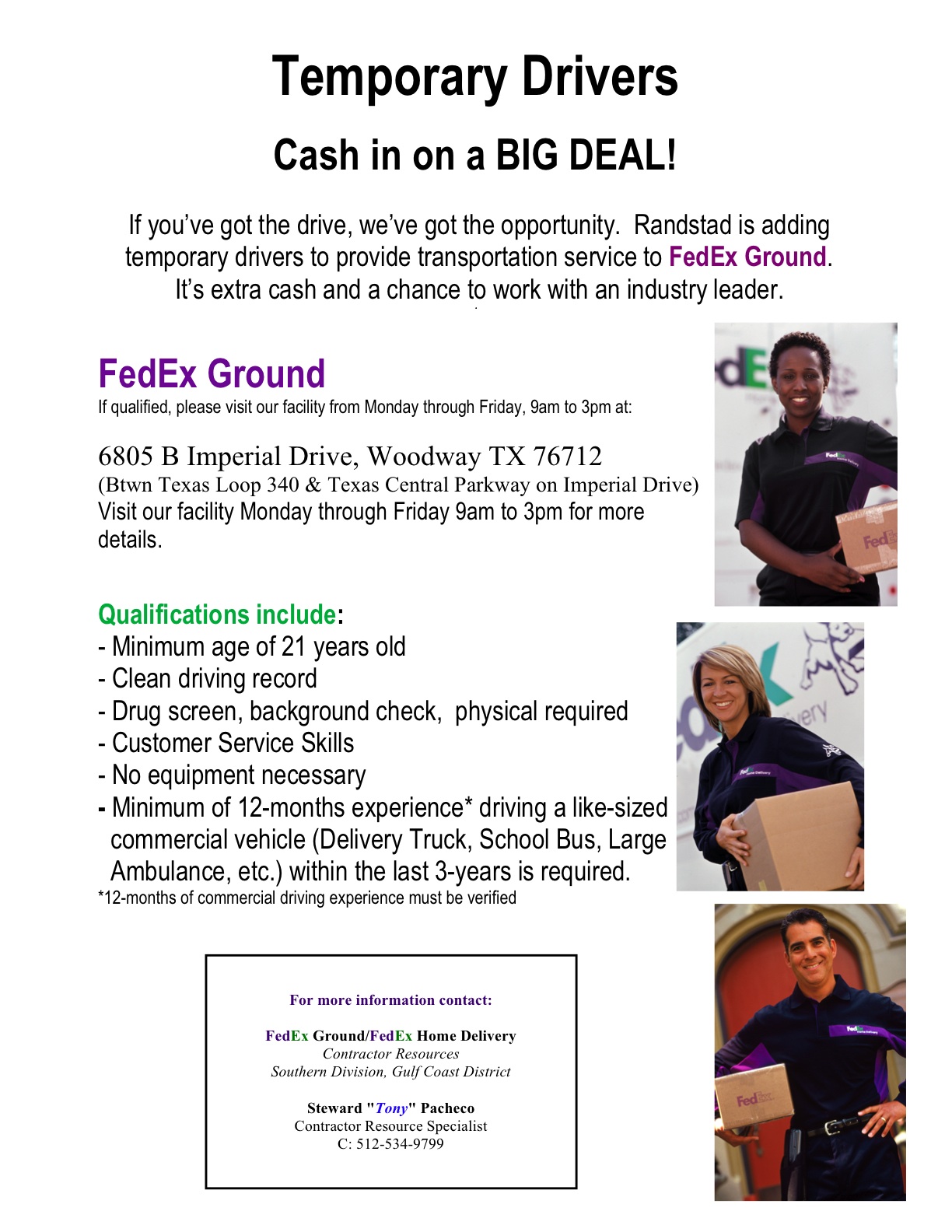
by cjxpadmin | Feb 27, 2013 | Job Readiness, This Issue's FEATURE
by Sheena Williams
“March winds and April showers bring forth May flowers.”
However, before we can get to the flowers, we need to get through the wind and the showers! Spring is in the air, but so are storm clouds, high winds, and tornadoes. So, to make sure that you and yours are safe this weather season we have listed some safety tips to get you to the May flowers despite the March winds and April showers.
Tornadoes
Most people will tell you that during a tornado, you are safest in an underground shelter or a reinforced room with no windows. But  what do you do in the event that you don’t have either of those options? You can:
what do you do in the event that you don’t have either of those options? You can:
In homes or smaller buildings, find the northeast corner of a basement. Or if that is not an option, go to the smallest, most-interior room on the lowest floor, such as a closet or bathroom. Cover yourself to protect your body from flying objects.
- In schools, hospitals, factories or shopping centers, go to the smallest, most-interior room or hallway on the lowest floor. Stay away from glass or areas with wide roofs such as auditoriums and warehouses. Crouch down and cover your head.
- In high-rise buildings, go to the smallest, most-interior room or hallway. Stay away from exterior walls and windows.
- If you are in a car or mobile home… abandon them immediately! Cars and mobile homes provide no protection from tornado winds. Leave them and go to a substantial structure or designated tornado shelter.

- It used to be that if you were caught out in the open, you were to find an overpass or bridge, but now it is said not to do that. They provide little shelter and have proved to be some pretty deadly options.
- If caught in the open, lie flat in a culvert, ditch or depression and cover your head.
Lightning
So, you’re safe in your own home watching the lightning show safely from your living room, hmm? Well, please keep in mind that at any given time, there are over 2,000 thunderstorms on the planet that produce 44 flashes of lightning. This means that if you see a thunderstorm, it behooves you to take cover. During a thunder storm, here are a few tips to remember:
- If you feel your hair standing on end, squat with your head between your knees. Do not lie flat!
- Avoid using the telephone or other electrical appliances. Let’s say you do bite the bullet, wave off the impending storm, and get on your PC anyway. You open yourself up to a lot of problems like power surges, and possibly being electrocuted. We can’t tell you not to do it, but we strongly suggest that if you have to get on to an electronic device, please use your cell phone, tablet, or lap top; that way, you can unplug the device away from the wall and continue to use it.

- Do not take a bath or shower or stand near plumbing. If you are boating or swimming, get out of the water and move to a safe shelter on land as quickly as possible. This sounds pretty self-explanatory, but there are a large number of people who will hop in the shower to get squeaky clean or decide to take their loved ones out for a swim when a storm hits. This is definitely not the smartest or safest choice as water attracts and is a conduit for electricity. Please be careful.
- Seek shelter in a sturdy building. A hard-top automobile can also offer protection. If you are in a
 wooded area, seek shelter under a thick growth of relatively small trees. However, avoid isolated trees or other tall objects, water, fences, convertible cars, tractors and motorcycles.
wooded area, seek shelter under a thick growth of relatively small trees. However, avoid isolated trees or other tall objects, water, fences, convertible cars, tractors and motorcycles.
Flash Floods
They can occur anywhere, along rivers or creeks, in low water crossings or in a dry stream bed. They can occur during any month and at any time during the day. In fact, flash floods often occur at night when it is difficult to find an escape route. Flash floods can be deceptive, and they develop really fast. Flood waters are likely deeper and moving faster than you think. Everyone, especially children, should stay away from flooded creeks, streams or drainage ditches. Swiftly flowing water can quickly sweep away even the strongest swimmers. You should also know to:
- Leave your vehicle immediately if it stalls in flood waters. Move to higher ground if you can do so safely. Avoid low water
 crossings and use alternate routes to avoid flood prone areas.
crossings and use alternate routes to avoid flood prone areas.
- Most cars and light trucks will begin to float in as little as 12 inches of water. Act quickly; rising waters can make vehicle doors difficult to open.
- Soggy banks can collapse, dumping you into flood waters. So make sure to stay on firm land and embankments.
Hurricanes
 There is a lot that goes into protecting yourself from a hurricane. There are many things to do in order to prepare, during and after. It has been advised that we give you the link to a hurricane safety site as opposed to listing to do’s here: http://hurricanesafety.org/
There is a lot that goes into protecting yourself from a hurricane. There are many things to do in order to prepare, during and after. It has been advised that we give you the link to a hurricane safety site as opposed to listing to do’s here: http://hurricanesafety.org/
Safety Sites
http://www.nws.noaa.gov/safety.php
http://www.weather.gov/safety
https://dps.mn.gov/divisions/hsem/weather-awareness-preparedness/Pages/default.aspx
http://www.weatherwizkids.com/
△

by cjxpadmin | Feb 27, 2013 | Job Readiness, This Issue's FEATURE
Excerpt from Life Transitions, Managing Change
Creating Your Future
It has been said the path to your greatest personal growth is through your problems. You are invited to embrace your problems for  unless you have them, they will have you. There’s a huge difference between the two. You will always have problems. Life is a puzzle. The difference between someone who suffers from their problems and someone who learns and grows from them is in how you take them on. Your future will depend entirely on how you deal with your problems.
unless you have them, they will have you. There’s a huge difference between the two. You will always have problems. Life is a puzzle. The difference between someone who suffers from their problems and someone who learns and grows from them is in how you take them on. Your future will depend entirely on how you deal with your problems.
Taking a New Approach — From Reaction to Creation
 It is normal, understandable, and human to react negatively to the difficult times you might face. However, you want to be very clear that the stress and suffering you have is a result of how you choose to react. It is also possible to take on your problems with a minimum stress. If you choose to create rather than react, perhaps, there will be no suffering at all. It will be helpful if you can envision the whole chain of reactions, which shape your usual reaction to things. The goal is to turn reaction into creation. But first, look at the flow as it usually occurs.
It is normal, understandable, and human to react negatively to the difficult times you might face. However, you want to be very clear that the stress and suffering you have is a result of how you choose to react. It is also possible to take on your problems with a minimum stress. If you choose to create rather than react, perhaps, there will be no suffering at all. It will be helpful if you can envision the whole chain of reactions, which shape your usual reaction to things. The goal is to turn reaction into creation. But first, look at the flow as it usually occurs.
Circumstances
For most people, circumstances determine how they feel and operate in life. If things are pretty good, they feel good. If something  breaks down, they get upset. If you live this way, your experience of life must be like a roller coaster because things go from good to bad and bad to good on a regular basis. For most people, there are always enough circumstances to make life tough, if not downright stressful. You have taken the first step in shaping how you react to circumstances by choosing how you view your own circumstances. This is the first step in shifting out of reaction. Let’s look at a flow chart and see how important this step really can be.
breaks down, they get upset. If you live this way, your experience of life must be like a roller coaster because things go from good to bad and bad to good on a regular basis. For most people, there are always enough circumstances to make life tough, if not downright stressful. You have taken the first step in shaping how you react to circumstances by choosing how you view your own circumstances. This is the first step in shifting out of reaction. Let’s look at a flow chart and see how important this step really can be.
The Flow Chart – Reaction
(Start from the bottom to see the reaction sequence.)
Outcomes and Results
(Eventually our future will come from the actions we take or don’t take regarding the circumstances we are dealing with.)
Behaviors
(Actions we undertake, things we do or don’t do about circumstances, all stem from what we feel. Our emotions are our motivators. Being angry, sad, or depressed are not always great motivators.)
Emotions
(Attitude and thoughts bring up feelings. Emotions hold the energy for what we feel and what we will do. If we react negatively to our circumstances, then, stress eats at us. Every time we run the upsetting thoughts through our head, we feel those same upsetting emotions.)
Attitude
(Attitude is a gathering of thoughts, conversations, and agreements. What I think is right and true becomes the way I think about the situation. If my reaction is negative, then, my initial attitude will be negative also.)
Interpretation
(We have an immediate reaction: Is this going to be good or bad for me? The interpretation that circumstances are bad causes a negative reaction.)
Circumstances
(Things that matter enough to cause us to react such as no job, financial problems, kid(s) in trouble, or transportation issues.)
Learning A Better Way
You can see from the flow chart that our response to stressful circumstances is usually determined by the reactions we have to them. This begins with our basic interpretation of events, whether we like them or not, and it goes from there. What if, instead of reacting to circumstances, we create our response from a different place?
Let’s use the future we would like for ourselves as a place to come from in determining how we take on tough parts of our lives. This is a much wiser option. We all want a future that works for us where we are successful and happy. The question is what does it take to make that happen?
Drawn Forward By the Future
While your future is unknown and uncertain, you have the power to steer your life into a future worth having. Everyone wants a future  where you can love your life. The most important question for you to ask is, “Who do I have to be to make the future I want?” To have a successful future, you will have to act in ways that can make it happen. This is the principal behind shifting reaction to creation.
where you can love your life. The most important question for you to ask is, “Who do I have to be to make the future I want?” To have a successful future, you will have to act in ways that can make it happen. This is the principal behind shifting reaction to creation.
Let’s take another look at the flow chart and see how the future you want can determine the ways you respond to difficulties you face. This time, instead of starting at the bottom, start at the top with the outcomes you want and observe how that determines how you will act, feel, and the attitude necessary to put your mind to work for you.
The Flow Chart
(Start at the top with the outcomes you want.)
Outcomes and Results
(Create an idea or a vision for the future you want. From your vision, create goals that will help you understand what you must do to make a better future.)
Behaviors
(The actions you now take are aimed at making your desired goals happen. Behaviors and actions consistent with your goals is the surest way to have positive movement in your life.
Emotions
(Next, you must create emotions and feelings that naturally motivate you toward reaching your goals.)
Attitude
(The way to create a good attitude is by encouraging yourself to feel positive, confident, and determined. These new thoughts will keep you striving toward the life you want.)
Interpretation
(Armed with a new attitude, you are free to re-interpret your circumstances. Instead of seeing the circumstances as either good or bad, you may see the problems you face as perfect.)
Circumstances
(Things that matter enough to cause us to react, such as no job, financial problems, kid(s) in trouble, or transportation issues. Now you can have an effective and powerful response to these situations instead of just suffering. Putting your personal power to work for you is the most useful response to stress.)
While you have many choices to the path to your future, the path you select is YOURS. You choose if you want to be happy; happiness is a choice you make. Your career and friends are other choices you must make. So, as you decide what you want out of your future, you must take responsibility for that future. Attitude, interpretation, behavior and emotions all will determine the outcome of your future. A smile can affect your attitude, which controls your emotion, which then, drives your outcome. So, if nothing else start with a smile and a positive attitude, it may do wonders for you. △

by cjxpadmin | Feb 27, 2013 | Job Club Heart of Texas, Job Search
This is the question we ask you all to answer last week in Discussion 32:
Of the following five behaviors that candidates exhibit during a job
interview, what do you believe is the one behavior most interviewers find
unforgivable?
1. Poor personal appearance/hygiene
2. Overemphasis on money
3. Failure to look at interviewer while interviewing
4. Did not ask questions
5. Late to interview
The following is the answer given by the author of the book Interviewing Skills:
“If you guessed #4, you are correct! Job applicants who donʼt ask questions make
interviewers lose confidence in them and it makes them feel that you might not possess
the ability to take on a job as great as the one he is offering you. So, remember to have
your questions ready.”
However, it is our belief at CampusJobXpress that the answer should be all of the above.
We found all of your answers very informative, well thought out, and applaud the way you
answered. The following is the remainder of the discussion from the author and we
welcome your thoughts and opinions.
“Now, back to what other situations interviewers view
negatively during a job interview. Make sure you donʼt do any of these:
• Late to the interview (Big No-No)
• Personal appearance that is unprofessional
• Overbearing, overaggressive or egotistical behavior
• Lack of positive purpose
• Failure to look at interviewer while interviewing
• Lack of interest and enthusiasm —passive and indifferent
• Lack of confidence and poise, nervousness
• Over emphasis on compensation
• Evasiveness, making excuses for unfavorable factors in work history
• Lack of tact, maturity and courtesy
• Condemnation of past employers, managers, projects or technologies
• Inability to carry on a conversation
• Lack of commitment to fill the position at hand
• Failure to ask questions about the position
• Persistent attitude of “What can you do for me?”
• Inability to take criticism
• Indecisive, cynical, or lazy
• Lack of preparation for the interview—failure to get information about
the company resulting in inability to ask intelligent questions.
Employers hire people they like; they do not hire people they do not like.
Therefore — first and foremost— be likable and create a good first
impression on your interview. People get hired — experience alone does
not!”

by cjxpadmin | Feb 26, 2013 | Employer Spotlight
With open ears, we hear the need for jobs.
Our subscribers are looking for jobs with benefits and jobs with a future. During our exploration of available opportunities, one such company has come into the spotlight…
Careers at Whataburger
Whataburger® began in 1950 when Harmon Dobson opened a tiny burger stand in Corpus Christi, Texas. From day one, he believed that valuing his employees would ensure the success of the company. He was right! That two-man burger stand has grown to over 700 Whataburger locations across 10 states. We are still family-owned and operated and everyone who works at Whataburger is considered a Family Member. We hire people we believe in, we train them for success and we help them build careers that last.
Find your place. For jobs within our restaurants, including everything from entry-level Team Member positions to General Manager, visit Restaurant Opportunities. Or, if you are interested in a corporate position, you should search our Home Office and Field Opportunities.
As General Manager, you’ll manage the entire store and have responsibilities that range from ensuring customer satisfaction to reporting sales. You’ll also grow and develop your team to create a great work environment.
Lead and inspire.
As Manager, you’ll serve as both a restaurant leader and team member. You’ll have numerous responsibilities in this role. Hard work and a great attitude will get you far.
Team Leader Responsibilities
As Team Leader, you will:
- Food Prep & Delivery
- Customer Service
- Daily Operations
- Restaurant Administration
Rewards
- Competitive Weekly Salary
- Paid Vacation/Sick Pay
- Advancement Opportunities
- Flexible Scheduling
- Discounted Meals
- Training Opportunities
- Health & Retirement Benefits
If you have an interest in working for a Whatabuger Store, a company with a future, please let us know. Send your resume to rachel@campusjobxpress.com and we will screen you for referral.

by cjxpadmin | Feb 26, 2013 | Employer Spotlight



 what do you do in the event that you don’t have either of those options? You can:
what do you do in the event that you don’t have either of those options? You can:

 wooded area, seek shelter under a thick growth of relatively small trees. However, avoid isolated trees or other tall objects, water, fences, convertible cars, tractors and motorcycles.
wooded area, seek shelter under a thick growth of relatively small trees. However, avoid isolated trees or other tall objects, water, fences, convertible cars, tractors and motorcycles. crossings and use alternate routes to avoid flood prone areas.
crossings and use alternate routes to avoid flood prone areas. There is a lot that goes into protecting yourself from a hurricane. There are many things to do in order to prepare, during and after. It has been advised that we give you the link to a hurricane safety site as opposed to listing to do’s here: http://hurricanesafety.org/
There is a lot that goes into protecting yourself from a hurricane. There are many things to do in order to prepare, during and after. It has been advised that we give you the link to a hurricane safety site as opposed to listing to do’s here: http://hurricanesafety.org/








